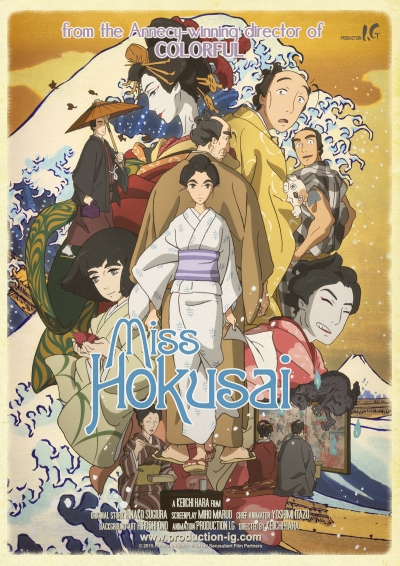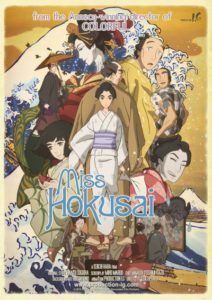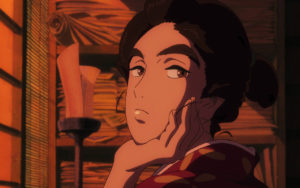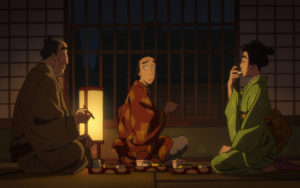
Indie Film Review “Miss Hokusai”
WATCH THE TRAILER HERE
First, the Recap:
Living up to expectation. It’s a daunting enough task when we face our own faults or shortcomings while attempting any given feat. However, how much stronger do those opposing forces feel when the source is our own family? It is 1814 Edo (the current day Tokyo), and a young woman, O-Ei (Anne Watanabe), resides in the shadow of her famous father, ukiyo-e painter, Tetsuzo (Yutaka Matsushige), also known as Hokusai. Having divorced and become self-occupied with his work, O-Ei has also taken to the art form, highly skillful herself, but unable to break away from the notoriety her father’s work gets, plus trying to simply take care of him and the run down, unkempt studio they both call home.
Despite the ministrations of family friends Zenjiro (Gaku Hamada), a former Samurai turned painter, Kuninao (Kengo Kora), a rival artist but deep respecter of Hokusai’s talent, and even the oafish, bumbling art pupil, Hatsugoro (Michitaka Tsutsui), O-Ei ultimately finds her only true solace with her younger sister O-Nao (Shion Shimizu), who’s blind but full of determined life. As her father grows more and more distant, O-Ei begins to make new attempts to explore her life and experience new things, finding some encounters productive and others not so engaging. But, still having family as the primary thing in mind and heart, O-Ei tries to make efforts to finally win the artistic adoration of Tetsuzo while also aiming to bring the family back together in a time of unexpected and heartbreaking loss.
Next, my Mind:
Director Keiichi Hara vibrantly brings this animated true-story based tale of Hokusai’s daughter to life from the original manga work “Sarusuberi” by Hinako Sugiura, doing so with a uniquely feminist theme while adventuring through the strained relationship O-Ei navigates with her dominating father who’s not convinced she possess the life knowledge to truly become the painter she desires to be. Yet, there is also the heartwarming closeness to her blind sister that showcases one of the few sources of pure joy O-Ei has, giving the viewer at least this level of realization of who the character really is inside when away from her father and his high-handed attitude. The animation is beautiful, very much apropos in style for this genre, and the narrative abounds in folklore and history-based imagery, cultural themes, colorful characters, and dialogue.
Watanabe lends a wonderfully smooth and solidly authoritative voice for the character of O-Ei, infusing her with that sense of frustrated passion, sometimes beleaguered apathy, but strong-willed, resolute conviction to do learn about life, herself, and what even, perhaps, it actually means to truly be an artist. On the opposite end of this, Matsushige’s deep, resonating voice for Tetsuzo paints the picture of a man who, despite his renown and brilliance, has truly let circumstances isolate him from so many who still love and cherish him, not willing to let people in, and burying himself in the only thing that still holds some sway–his art. Hamada, Kora, and Tsutsui add excellent vocal talent as the three primary friends Tetsuzo still retains, even if somewhat begrudgingly, and Shimizu’s airy, innocent voice for O-Nao is very solidly affecting.
Additional voices provided by Kumiko Aso as the upper class courtesan Sayogoromo and Danshun Tatekawa as a local store owner and art purchaser Manjido, among others, add to the richness of this historical story, accompanied by a surprisingly contemporary musical score from composer Harumi Fuki. In total, “Miss Hokusai” is a finely crafted piece of Japanese animation–entertaining, decidedly different in style, and a worthy adventure to take if you’re not familiar with the genre or with the artist’s story it so vividly portrays.
As always, this is all for your consideration and comment. Until next time, thank you for reading!




